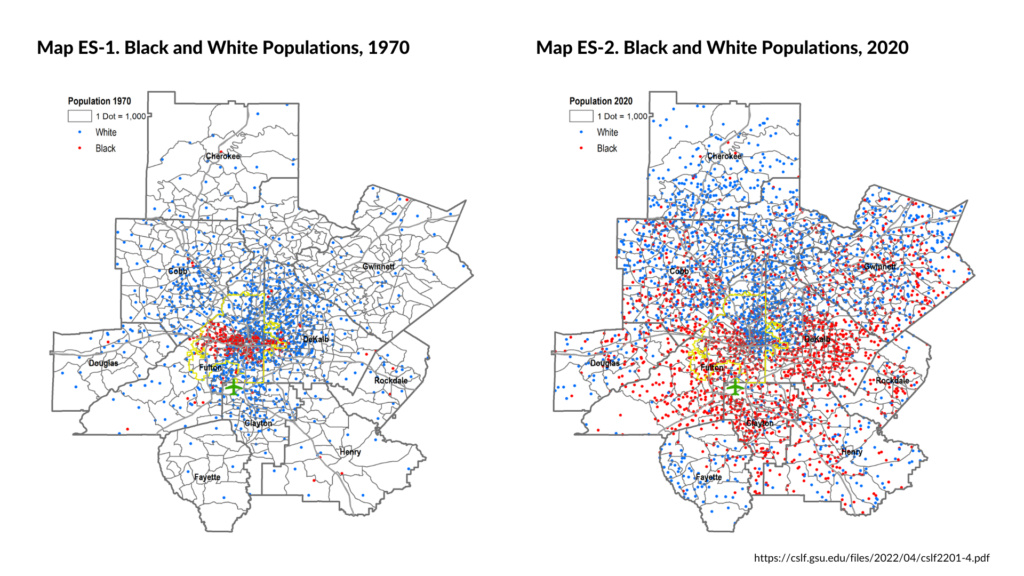
ATLANTA – Racial segregation in housing in the 10-county Atlanta area has eased during the last 50 years, according to a new study from Georgia State University.
Research by economists at the school in downtown Atlanta shows a combination of population growth and federal legislation have resulted in substantial changes in Black residential patterns – particularly in the last 20 years – in a metro region that had been deeply segregated.
Black residents were largely concentrated in a few in-town Atlanta neighborhoods east and west of Atlanta’s Central Business District in 1970. But over the next two decades, Black families and individuals began expanding into south Fulton, southeast DeKalb and northern Clayton counties.
The Georgia State study attributes those changes in part to the impacts associated with congressional passage of the Fair Housing Act of 1968.
By 2000, the Black population had expanded into other areas of the region, particularly in the north, and by 2020 substantial numbers of Blacks could be found throughout the entire region.
“When Blacks began locating in white neighborhoods, many whites moved out, many outside the I-285 perimeter,” said Lakshmi Pandey, a senior research associate at Georgia State’s Fiscal Research Center.
“However, whites recently have increased their share in many census tracts that were predominately Black in 1970. Although there were no large increases of white residents in any of these tracts, their presence in many areas of Atlanta is significant in the last decade compared to trends prior to 2010.”
The study also concluded that immigration of Asians to the U.S. – and therefore, Atlanta – increased significantly after passage of the 1965 Immigration and Naturalization Act. With “other races” comprising just 0.2% of the region’s total population in 1970, the share of the Asian population rose to nearly 7.2% in 2020.
Pandey and Georgia State economics professor David Sjoquist also explored four factors that might explain the observed changes in where Atlantans live — Black population density, Black living preferences, white avoidance and income differences — with mixed results.
“Our findings offer encouraging evidence of a positive change in racial residential segregation and the underlying dynamics,” Sjoquist said. “[But] a positive conclusion must be tempered by the fact that racial residential segregation is still high, particularly in Fulton and DeKalb, and that in the past decade the white population in the 10-county region decreased.”
This story is available through a news partnership with Capitol Beat News Service, a project of the Georgia Press Educational Foundation.
